|
WHALES AND
DOLPHIN WATCHING IN GRENADA, CARRIACOU |
|
|
Carriacou (Grenadines). |
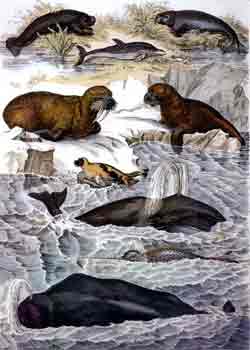 |
Grenada is a member of the British Commonwealth.
Called 'the Spice Island' for its high production of nutmeg, mace and other spices,
agriculture (including cocoa and bananas) is the main industry. Since the 1980s,
however, tourism has risen steadily and is now the second leading source of the country's
GDP. In 1997, there were 110,748 tourist arrivals (up 2.3% on the previous year) and
246,612 cruise passenger arrivals (down 7.6%) for total expenditures of $59.4 million USD.
These figures have more than doubled over the past decade. |
|
For some years the offshore waters of Grenada have been known to have various dolphin populations as well as whales, but only marine scientists and a few yachters knew the possibilities. The following species can be seen through much of the year but are generally best November to May: spinner and spotted dolphins mainly, followed by common and bottlenose dolphins, short-finned pilot whales, and sperm whales. |
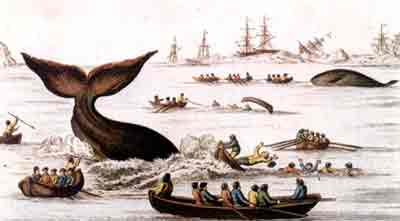 |
|
The prime area is 2-15 miles (3-24 kms) off the west coast of the island where it is also protected from the wind. Grenada Bank in particular is a good site for finding cetaceans. Humpback whales can sometimes be seen from January to March off the south coast of Grenada, on Grenada Bank and near Carriacou. Mosden Cumberbatch, the operator offering dolphin and whale tours, offers 5-hour tours from Grand Anse Beach and has recently traded in his motor sailer sloop for a new catamaran designed for cetacean watching with a level platform for watching and taking photographs. In addition to the whale watching from the main island of Grenada, there is some whale watching as part of a unique ecological-educational project on Carriacou. The island of Carriacou, 23 miles (37 km) north of Grenada, is the largest of all the Grenadine islands located between Grenada and St. Vincent. Carriacou is a little less than 5 square miles (13 sq km) with a population of 6,000 people. For the past few years, the Kido Project, a special project of the nonprofit YWF (Yachting Without Frontiers) Kido Foundation, set up by Carriacou residents Dario Sandrini and Marina Fastigi, has been developing an imaginative educational programme which includes whale and dolphin watching as part of a broad spectrum of ecological education from plants and insects to geology and cultural investigations. In 1998, after operating trips on their 28 x 55 foot (8.5 x 17 m) catamaran for several years, the Kido Project enlarged its research station and refitted and refurbished the catamaran. All enquiries for whale watching in 1998 were passed to another Carriacou yachter or to Mosden Cumberbatch in Grenada. |
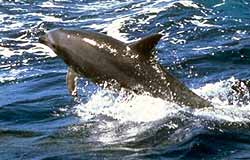 |
As of 1999, the Kido Project's Hokule'a is now set up for carrying 10 people on overnight trips or 40 persons on day tours. These unusual land and marine nature tours are a credit to the fascinating diversity of Grenada — another reason to visit the country. The potential for expanding whale and dolphin watch tours off Grenada and in the Grenadines is considerable. Grenada has a solid tourism infrastructure and direct flights from the UK, Europe, and several US and Canadian cities. According to Nathalie Ward (ECCN), there is a market for more operators to get |
|
involved, especially if they take a 'habitat approach' for their ecotours as Project Kido does, including birds, geology, oceanography, fishing, and folklore, as well as cetaceans. As noted in a 1996 IFAW cetacean field research report, the protected sea area to the west of Grenada, the lee area, is smaller than Dominica's and some of the other eastern Caribbean islands, which restricts the area available for calm water whale watching. However, the presence of some unusual cetaceans such as false killer whales, melon-headed whales and Fraser's |
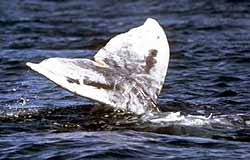 |
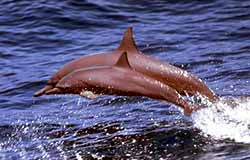 |
dolphins, in addition to sperm whales, 'may be quite attractive to whale watchers.' Recently, the Grenada Board of Tourism has helped boost interest by producing a dramatic full colour ecotourism brochure highlighting Grenada, Carriacou and Petite Martinique as the 'Eco Islands of the Caribbean'. The 4-page brochure highlights the system of national parks and protected areas in Grenada which now cover 17% of the country. The brochure also features whale watching and gives contact details for going whale watching, devoting more lines (15) to whale watching than to diving or hiking, and giving equal |
|
importance to it next to bird watching. Whale watching and marine ecological tours fit in perfectly with Grenada's interest in furthering its nature and ecotourism appeal. While whale and dolphin watching are not currently a primary reason why people come to Grenada, it is becoming an activity which more and more people take up during their visit. With more promotion such as the ecotourism brochure and further enhancement of the tours to create a competitive product on the world market, as well as a sensible permit and regulatory scheme, such tours could be expanded considerably to become valuable contributors to GDP. Acknowledgments: Celine J. Bullen (Director, Grenada Board of Tourism-UK), Dario Sandrini and Marina Fastigi (Kido Project Ltd.), Nathalie Ward (Eastern Caribbean Cetacean Network-ECCN), Mosden Cumberbatch (Starwind Enterprises), David Blockstein (Committee for the National Institute for the Environment, USA), IFAW 1996b, CTO 1997. |